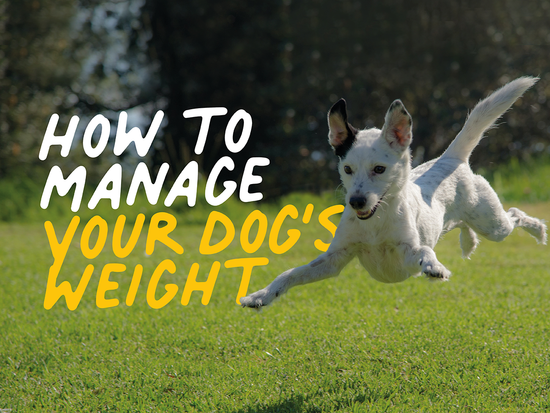Are you struggling to get your furry friend to eat? Anyone who has a fussy dog knows the frustration of placing down your dog's food, for it to still be there two hours later untouched. They’ve been on a big walk, and had no treats that day, but still they won’t touch it.
If this sounds like your pooch, we understand your frustrations, and we’re here to help! With the right approach, you can turn mealtimes into a joyous occasion for both you and your beloved pup.
When we created Caboodle, we didn’t set out to be the solution for fussy dogs, our goal was to give all dogs a mixed diet packed with nutrients and variety that we enjoy as humans, without the hassle of giving up freezer space or home cooking (who has the time!). Since we launched, dog owners have told us that we’ve turned their fussy four-legged friends' eating habits around and helped them discover the joy of good food.
In this blog post, we'll explain how we’ve done it and explore some tips to help your fussy dog eat every last morsel.
1. Stick to a Routine:
Dogs thrive on routine, so establish a regular feeding schedule. Serve meals at the same times each day and avoid leaving food out all day. This helps regulate your dog's appetite and encourages them to eat when food is offered.
2. Variety & High-Quality Food:
Invest in high-quality dog food that is formulated to meet your dog's nutritional needs. A balanced diet is crucial for your dog's overall health and can entice even the pickiest eaters. The Kennel Club believes that fussy dogs are often smarter than their less fussy counterparts. They’ve realised that if they hold out on their regular food, they’ll get offered something different. Here’s where Caboodle comes in. Across the week, no two days are the same. We’ve recognised your dog's need for variety and contrast, different textures and proteins. One stack of Caboodle contains seven different proteins, including Chicken, Beef, Turkey, Salmon and Duck.
3. Experiment with Different Textures:
A dog’s first impression of food may be with the nose, but the second is with the mouth. If your dog never touches dry food, why not try adding a little warm water to their food? This helps to release the flavour and smell - just make sure to check the temperature with your knuckle before giving it to them. Serving your dog a mixture of wet and dry food is also likely to reduce fussiness according to The Kennel Club.
Why? Because the crunch of the kibble and the taste and juiciness of the wet food work together in perfect harmony to give your dog a delicious meal which is altogether more satisfying and appealing to the fussiest of taste buds. Read our blog article on the benefits of feeding a mix of wet and dry dog food to find out more.
4. Measured Treats
Whoever said you can’t teach an old dog new tricks, has clearly never met a Caboodle dog. We know that no matter what the age of your dog, training treats (or treats to reward them for good behaviour) are an important part of your dogs daily calorie intake. But, just like humans with a bag of chocolate buttons, it's easy to lose track of how many they’re eating. Caboodle’s pre-measured, low calorie treats mean that your dog gets the motivation and encouragement they need, without the risk of piling on the pounds. If you don’t usually give treats, just sprinkle the tasty morsels onto their daily meal as a topper.
5. Provide Regular Exercise:
Regular exercise not only keeps your dog physically healthy but also stimulates their appetite. Make sure your dog gets plenty of opportunities for playtime and walks throughout the day to work up an appetite for mealtime.
6. Avoid Feeding Table Scraps:
While it may be tempting to share leftovers from Sunday lunch with your dog, feeding table scraps can contribute to picky eating habits. Stick to feeding your dog their own meals and avoid reinforcing begging behaviour at the dinner table.
7. Use Interactive Feeders:
Interactive feeders and puzzle toys can make mealtime more engaging for your dog. These toys encourage your dog to work for their food, providing mental stimulation and increasing their enjoyment of mealtime.
8. Offer Small, Frequent Meals:
If your dog tends to graze throughout the day rather than eating large meals, consider offering smaller, more frequent meals. This can help prevent them from feeling overwhelmed and make mealtime more manageable.
9. Stay Patient and Persistent:
Changing your dog's eating habits won't happen overnight, so be patient and persistent. Stick to your routine and continue trying different strategies until you find what works best for your furry friend.
10. Consult with a Vet:
If your dog's picky eating persists or if you notice any concerning symptoms such as weight loss or digestive issues, consult with your vet. They can provide personalised recommendations and rule out any underlying health issues that may be contributing to your dog's fussy behaviour.
In conclusion, helping your fussy dog eat happily requires patience, persistence, and a willingness to experiment with different strategies. By following these tips and tailoring them to your dog's individual preferences, you can make mealtime an enjoyable experience for both you and your furry companion.
Don’t forget, you can try Caboodle now and save 15% off your first order with code FIRSTBOX15.




